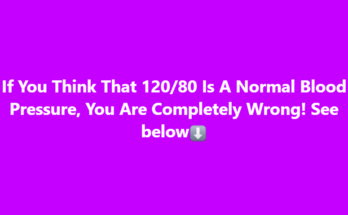Music has always had a mysterious pull on the human mind. From ancient tribal drumming to modern lo-fi beats used for studying, rhythm has been deeply intertwined with how we think, feel, and focus. But what exactly happens in the brain when we listen to rhythmic sounds? Why does a steady beat help some people concentrate while others find it distracting? Neuroscience now offers some fascinating insights into how rhythm and brain waves interact — and how we can use this connection to improve attention, memory, and even creativity.

The Science of Brain Waves and Rhythm
Our brains are electric organs. Billions of neurons fire in patterns that create measurable electrical oscillations known as brain waves. These waves can be divided into several frequency bands, each associated with different mental states:
- Delta waves (0.5–4 Hz): Deep sleep and restoration
- Theta waves (4–8 Hz): Drowsiness, daydreaming, creativity
- Alpha waves (8–12 Hz): Relaxed alertness, calm focus
- Beta waves (13–30 Hz): Active thinking, concentration, problem-solving
- Gamma waves (30–100 Hz): High-level processing, intense focus, insight
When we listen to music, particularly rhythmic patterns, our brain waves tend to synchronize with the tempo of the beat. This process, called entrainment, is what allows us to tap our foot in time or feel a song’s groove. But entrainment doesn’t just influence physical movement — it also aligns internal brain rhythms with external sound frequencies, shaping our mental state.
The Power of Entrainment
Imagine you’re listening to a slow, steady rhythm — perhaps a meditative drum beat or ambient track. As your auditory system processes the rhythm, your brain begins to oscillate in harmony with it. Slower rhythms encourage slower brain waves, nudging the mind toward a more relaxed, alpha-theta state. This is why gentle, repetitive music is often used for meditation, yoga, or sleep enhancement.
Conversely, fast-paced music with quick, driving beats stimulates higher-frequency brain waves, such as beta or gamma, promoting alertness and concentration. This is why upbeat music can make workouts feel easier or help you power through a mentally demanding task.
Researchers have discovered that rhythmic auditory stimulation can even synchronize neural firing in different parts of the brain, improving communication between regions involved in attention, motor control, and memory. Essentially, rhythm can “tune” the brain for optimal performance.
How Rhythm Shapes Attention and Focus
Focus is a fragile thing in the digital age. Notifications, multitasking, and constant stimuli pull our attention in a hundred directions. Music rhythm, however, can act as a cognitive anchor. When we listen to a steady beat, our mind naturally aligns with that pattern, reducing internal noise and helping us maintain a single train of thought.
A well-chosen rhythm can enhance focus in several ways:
- Stabilizing mental tempo: A consistent tempo gives the brain a timing reference, helping maintain concentration and reduce wandering thoughts.
- Reducing stress responses: Repetitive rhythms can lower cortisol levels and calm the nervous system, making it easier to stay present.
- Boosting motivation: Rhythmic structures trigger dopamine release — the neurotransmitter linked to reward and pleasure — which can make tasks feel more enjoyable.
- Improving task persistence: People often sustain attention longer when performing repetitive tasks to rhythmic background music.
Studies have shown that rhythmic music, especially instrumental or electronic genres with a moderate tempo (around 60–90 beats per minute), can improve focus during reading, coding, or studying. The tempo subtly guides the pace of cognitive processing, allowing for steady, sustained engagement.
The Role of Tempo and Genre
Different rhythms affect the brain differently. Slow tempos (under 60 BPM) tend to enhance relaxation and creativity, aligning with alpha and theta brain waves. These are perfect for brainstorming, journaling, or meditative practices. Moderate tempos (60–90 BPM) synchronize with a calm but alert state — ideal for focused work, studying, or reading comprehension. Fast tempos (100–140 BPM) activate beta waves, increasing energy and reaction times, making them suitable for exercise or high-intensity tasks.
The genre also matters. Classical compositions, ambient soundscapes, and lo-fi hip-hop often feature balanced rhythms that encourage deep work without overwhelming the listener. On the other hand, genres like rock or EDM, while energizing, can be too stimulating for tasks that require sustained cognitive control. The key is matching rhythm intensity with the mental demand of the activity.
Binaural Beats: A Modern Form of Rhythmic Stimulation
A fascinating modern application of rhythm-based brain entrainment is binaural beats — audio tracks designed to influence brain waves through subtle frequency differences. When two slightly different tones are played in each ear (for example, 200 Hz in one ear and 210 Hz in the other), the brain perceives a rhythmic beat at the difference between the two (in this case, 10 Hz). That perceived beat can encourage brain waves to align with the frequency, potentially guiding the listener into a specific mental state.
Research into binaural beats suggests they can enhance focus, reduce anxiety, and even improve sleep quality. Although not all studies agree on their effectiveness, many users report improved attention and relaxation when using them consistently.
How Musicians Harness the Power of Rhythm
Musicians intuitively understand how rhythm can manipulate emotion and cognition. Film composers, for example, use rhythmic pacing to heighten tension or evoke calm. A slow, pulsing rhythm can make a scene feel contemplative, while rapid percussion can quicken the heart rate and sharpen focus.
In therapeutic settings, rhythmic auditory stimulation is used to help patients with neurological conditions such as Parkinson’s disease or stroke. The rhythmic cues assist in retraining motor coordination and cognitive timing. Similarly, music therapy employs structured rhythmic exercises to help children with ADHD or autism improve attention and sensory integration.
Using Rhythm for Everyday Focus
In daily life, rhythm can be a powerful ally for productivity and well-being. Here are some practical ways to use music rhythm to improve focus:
- Create a rhythmic workspace: Choose playlists with steady, mid-tempo rhythms and minimal lyrics to maintain cognitive flow.
- Time-block with music: Use songs or rhythm-based timers to mark work intervals (like the Pomodoro technique), training your brain to associate certain beats with focus.
- Start your day with rhythm: Listening to energizing music upon waking can prime beta brain activity, setting a motivated tone for the day.
- Wind down rhythmically: Slowing your evening music tempo helps transition your brain into alpha or theta states, preparing for rest.
Experimenting with different rhythmic patterns can reveal what best supports your individual focus style. Some people find repetitive electronic rhythms ideal for analytical work, while others thrive with acoustic or classical patterns that mirror natural human cadence.
The Future of Rhythm and Cognitive Enhancement
As neuroscience and sound technology evolve, rhythm-based brain training is becoming a legitimate field of study. Researchers are exploring how rhythmic stimulation could enhance learning, memory consolidation, and even creativity. Wearable devices that deliver rhythmic pulses or brainwave-synced audio are already being tested to support concentration and mental health.
Artificial intelligence is also contributing by generating adaptive music — soundscapes that adjust tempo and rhythm in real-time according to a listener’s physiological state. Imagine a playlist that slows down when your brain signals fatigue or speeds up to help you power through a challenging project. The future of rhythm-driven focus may be interactive and personalized.
Conclusion
Music rhythm isn’t just entertainment — it’s a form of neural communication. By aligning brain waves with rhythmic patterns, we can influence mood, cognition, and concentration in profound ways. Whether through a steady lo-fi beat, a classical waltz, or a modern binaural track, rhythm helps organize the brain’s internal timing, turning chaos into coherence.



